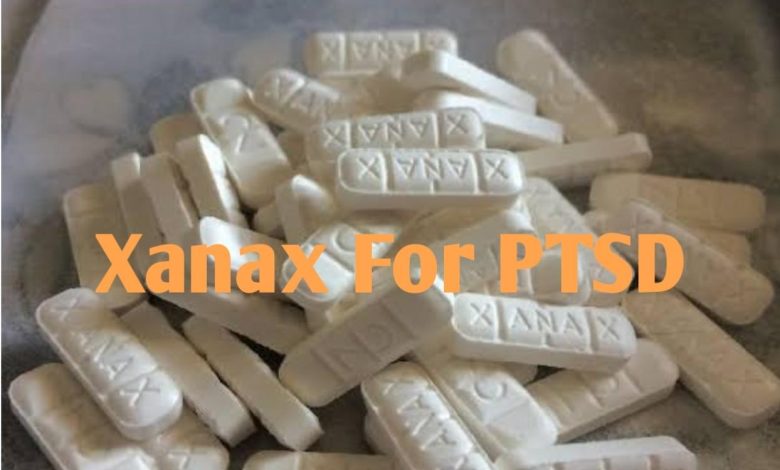How Good Is Xanax For PTSD?

What is post-traumatic stress disorder (PTSD)?
Post-traumatic stress disorder (PTSD) is a mental health disorder that some people develop after they experience or see a traumatic event. The traumatic event may be life-threatening, such as combat, a natural disaster, a car accident, or sexual assault. But sometimes the event is not necessarily a dangerous one. For example, the sudden, unexpected death of a loved one can also cause PTSD. PTSD is thought to affect between 7–8% of the population, and it is more likely to affect women than men.
It’s normal to feel afraid during and after a traumatic situation. The fear triggers a “fight-or-flight” response. This is your body’s way of helping to protect itself from possible harm. It causes changes in your body such as the release of certain hormones and increases in alertness, blood pressure, heart rate, and breathing.
In time, most people recover from this naturally. But people with PTSD don’t feel better. They feel stressed and frightened long after the trauma is over. In some cases, PTSD symptoms may start later on. They might also come and go over time.
What is Xanax?
Xanax is a brand of alprazolam, an FDA-approved medication used to treat the following anxiety disorders in adults:
- generalized anxiety disorder
- panic disorder, with or without agoraphobia (fear of being in places where it may be hard to leave)
Xanax is classified as a Schedule IV controlled substance. This means the medication has an accepted medical use, but it also has a risk of misuse and dependence. With misuse, a drug is taken for a purpose or in a way that a doctor has not prescribed. Misuse can lead to addiction, which is when you’re unable to stop taking a drug, even though it may be causing harm. With dependence, your body becomes reliant on a drug to function as usual. Dependence can lead to withdrawal symptoms if you suddenly stop taking a drug.
Xanax comes as an oral tablet. It’s available in four strengths: 0.25 milligrams (mg), 0.5 mg, 1 mg, and 2 mg.

Does Xanax Work For Post-traumatic Stress Disorder (PTSD)?
Yes, Xanax may be effective in managing some symptoms of PTSD, although it is not generally recommended as a first-line treatment for PTSD. However, some published research and ongoing studies have reported that Xanax does not help to reduce the symptoms of PTSD.
Public health practitioners warn against the use of Xanax or other benzodiazepines for the management of PTSD largely because of the high risk of abuse and dependence. Xanax is only recommended for short-term use because of its side effects while symptoms of PTSD in some people can last for many years, especially if they go untreated.
Why do some doctors prescribe Xanax for PTSD?
Some doctors prescribe Xanax for persons with PTSD because some people with the condition often struggle with co-occurring conditions like anxiety-related disorders or depression. It is not uncommon for a person with PTSD to also be diagnosed with panic disorder.
Xanax Dosage For PTSD
In cases where a doctor finds Xanax suitable for a person with PTSD, he or she may prescribe the following dosage of Xanax depending on the co-occurring condition being managed:
• Anxiety: An initial dose of 0.25 mg to 0.5 mg of Xanax is administered orally, three times a day. The dose can be increased gradually every three to four days up to a maximum daily dose of 4 mg in divided doses.
• Panic: An initial dose of 0.5 mg of Xanax is administered orally, three times a day. This dose can be increased every three to four days. The maintenance dose of Xanax is between 1 mg to 10 mg per day in divided doses (with an average dose ranging between 5 mg to 6 mg per day).
• Depression: An initial dose of 0.5 mg of Xanax is administered orally three times a day. The dose can be increased by no more than 1 mg every three to four days. An average dose of 3 mg of Xanax daily in divided doses has shown to be the most effective. Maximum dose should not exceed 4.5 mg daily in divided doses.
For elderly individuals (adults aged 65 years or older) dosage should not exceed 2 mg per day without consent from a doctor because of a greater sensitivity to the effects of benzodiazepines.
How to get prescribed Xanax for PTSD
If you have PTSD and struggle with co-occurring conditions like anxiety-related disorders or depression, talk to your regular doctor about your anxiety. Sometimes anxiety can actually be a symptom of some other illness.
Consulting a doctor is your best course of action to confirm if Xanax is the right medication for you. It is possible to be prescribed Xanax if you have PTSD.
However, even if you are suffering from anxiety or panic disorders as a person battling PTSD, Xanax will NOT be prescribed if you have a history of substance abuse because it heightens the risk for addiction. In fact, even people who have no prior addiction issues develop an addiction to Xanax.
In addition, if you heavily drink alcohol, you should NEVER consider taking Xanax because this could lead to severe depression, suicidal behavior, and even death. Instead of treating your mental condition, taking Xanax may only worsen your symptoms.





